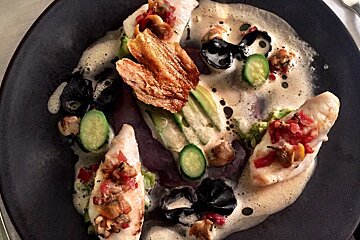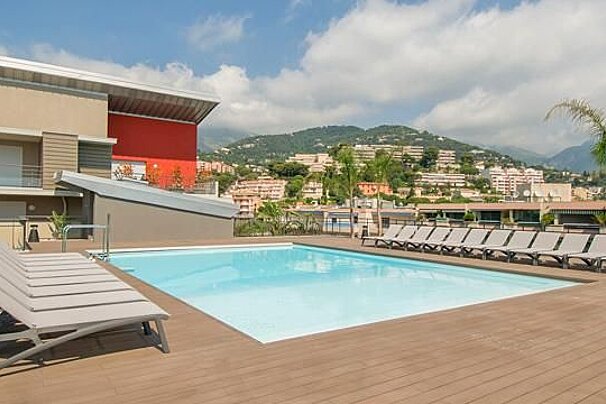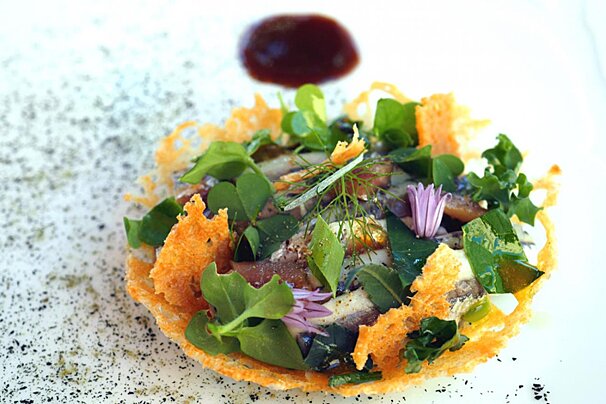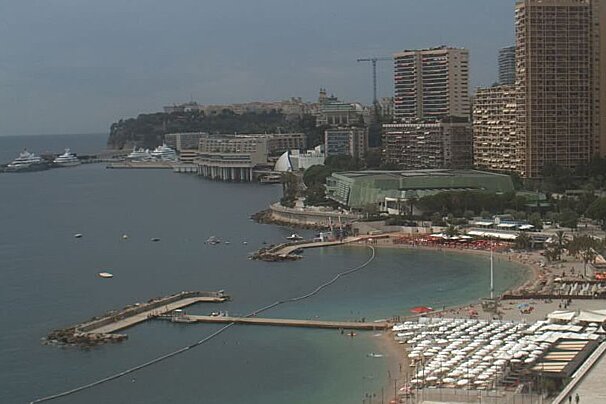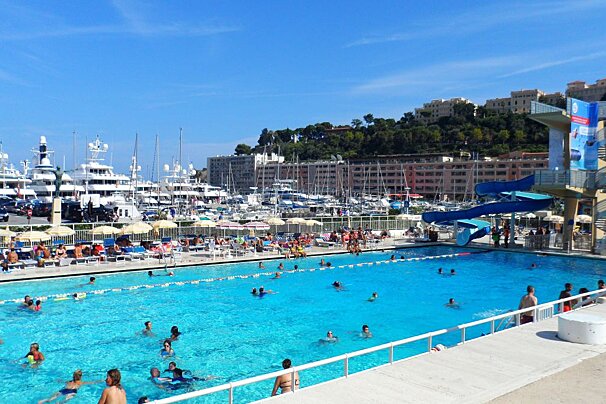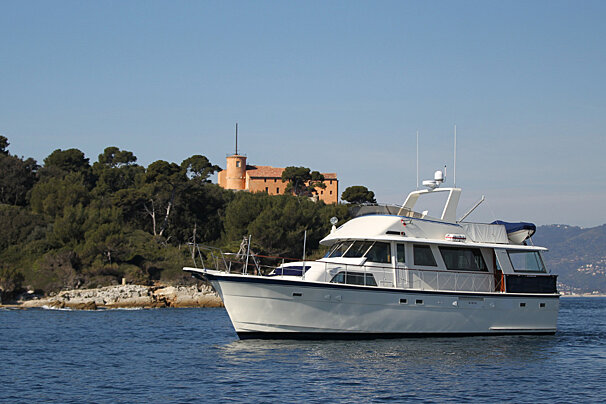
Local Cuisine in Monaco
Discover the top Monaco local cuisine
Food and gastronomy in Monaco play a tremendous part in the culture and daily life, from the fresh seafood markets to the abundance of locally grown fruit and vegetables. The huge Mediterranean region of Provence is widely renowned to offer healthy, flavoursome and colourful cuisine, as well as traditional dishes; take a look a some of Monaco's local dishes.
The cuisine of Provence is the result of the warm, dry Mediterranean climate; the rugged landscape, good for grazing sheep and goats, the abundance of seafood on the south coast and of course the 'black diamonds', truffles. The basic ingredients are olives and olive oil, garlic, lamb and goat, chickpeas, local fruits, such as grapes, peaches, apricots, strawberries, cherries, and the famous melons of Cavaillon.
Jump to
- Beignets de Fleurs de Courgettes - Fried Courgette flowers
- Bouillabaisse - Traditional Provencal fish stew, originating from Marseille
- Calisson - A traditional French candy originating in Aix-en-Provence
- Daube - A traditional and hearty Provencal style beef stew
- Farcis Niçois - A traditional family meal made with the Spring & Summer vegetables
- Gateau des Rois - The Cake of Kings!
- Ice Tropez - a cocktail Made in Saint Tropez
- Pissaladiere - Caramelised onion & anchovy flatbread popular across Provence & the Cote d'Azur
- Ratatouille - Traditional vegetable stew from the Occitan region, a Provencal favourite
- Salade Niçoise - A delicious famous salad from the Côte d'Azur region of France
- Socca - Chickpea flour pancake, a delicious treat of a snack!
- Soupe au Pistou - Thick, rich Provencal vegetable & bean soup with basil dressing
- Tarte Tropezienne - The one & only creamy sponge cake from Saint Tropez
- Tourte de Blettes - Swiss chard tart - the chard being the main ingredient!
- More inspiration...
Beignets de Fleurs de Courgettes - Fried Courgette flowers

Frittered courgette flowers are a speciality in Nice and all along the Cote d'Azur, probably influenced by the region's Italian history as a similar dish is popular in Rome. They are a firm favourite in Monaco when they come into season
Sometimes stuffed with cream cheese in advance and then seasoned with salt, parsley and garlic, they are often served as a snack or with a salad. What ever way you decide to fry them, they taste delicious when covered in a light batter!
The result of the egg white batter is light and similar to a Japanese tempura. The flowers come in both a male and female form, and although male is more popular for fritters, they can be harder to source, so many make do with the female flowers.
Bouillabaisse - Traditional Provencal fish stew, originating from Marseille

Originally a dish made by the Marseille fishermen with boney rockfish that they were unable to sell at market, it has now become on of the best loved and most popular dishes along the French Riviera.
Bouillabaisse is different from many other fish soups due to the selection of Provençal herbs and spices in the broth; the use of bony local Mediterranean fish; the way the fish are added one at a time, and brought to a boil; and the also method of serving.
For locals, its appeal lies as much in the flavour as in the ceremonial of serving and eating it: first the broth, then the fish flesh, and the copious quantities of croutons and rouille (a spicy, saffron garnish). Generally there will be a minimum of four types of fresh fish (there is no consensus on a definitive list) cooked in a rockfish stock with onions, tomatoes, garlic, saffron and herbs.
The rouille is a spicy mayonnaise, spread on thick slices of bread and floated on the bouillabaisse when it served. Made with an egg yolk, two cloves of garlic, a cup of olive oil, and ten pistils of saffron, and seasoned with salt and Cayenne pepper, it in itself is a local speciality.
Calisson - A traditional French candy originating in Aix-en-Provence
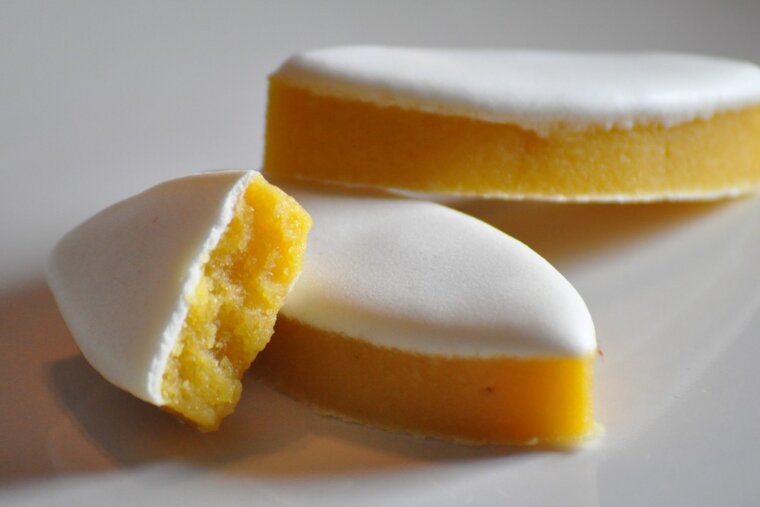
In fact most of the world supply of calissons are still made in the Provence region, perhaps due to their abundance of almond trees, and no doubt their fierce pride.
The sweet itself consists of a smooth, pale yellow paste of candied fruit (most commonly melons and oranges) and ground almonds topped with a thin layer of royal icing. The ultimate sugar hit!
They have been made in Aix-en-Provence since the 17th century, but the calisson is believed to have its origins in medieval Italy. An early 12th century text written in Medieval Latin used the word 'calisone' to refer to a cake made with almonds and flour.
Some trace the introduction of calissons to Provence around the mid-15th century at the second wedding of King Rene of Anjou. Others suggest that it was not introduced in its modern form until the 16th century, as this was when almonds became an established crop in Aix-en-Provence
However they came about, I think we can all agree that this delightful sweet is a welcome addition to the heritage of Provence.
Daube - A traditional and hearty Provencal style beef stew
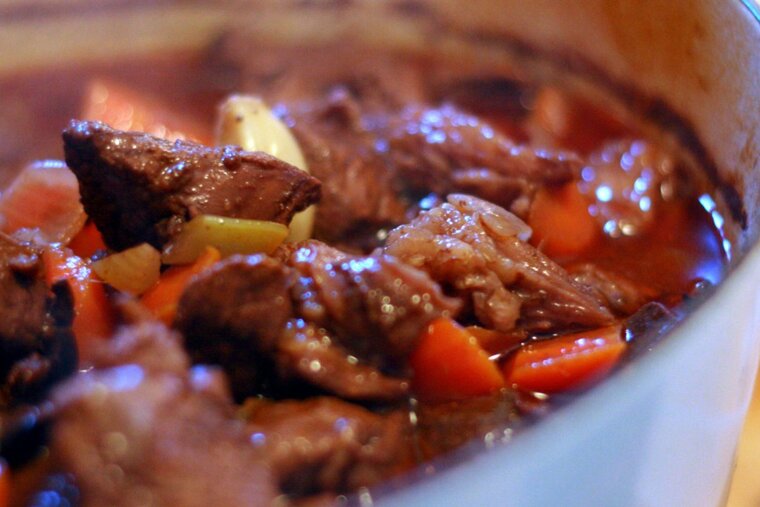
Naturally this is made with the freshest of Provencal ingredients...so it is probably about time for a trip to the market again!
Cubed beef braised in wine, vegetables, garlic, and herbes de provence. The traditional cooking method involves a 'daubiere', a braising pan (hence the name), which is normally a terracotta pot that somewhat resembles a pitcher with a concave lid. The meat used is cut from the shoulder and back of the bull, although some would suggest that a total of three cuts of meat are necessary. As with many Provencal meals, recipes vary from town to town and family to family.
Some variations of the tradtional stew also include ingredients such as olives, prunes, and flavouring like duck fat, vinegar, brandy, nutmeg and cinnamon.
Interesting fact: In the Camargue and Béarn area of France, bulls killed in bullfighting festivals are often used for daube!
Farcis Niçois - A traditional family meal made with the Spring & Summer vegetables

This Niçois dish is made by hollowing out vegetables - courgettes, aubergines, tomatoes - and filling them with a stuffing made from minced meat, onion, breadcrumbs and seasoning.
These creations are then roasted in the oven and served hot. Recipes often vary from family to family with most people re-creating the recipe that their mother made and that they were brought up on. Stuffing the fresh summer vegetables in this ways allows people to use up the scraps of meat, bread and other herbs and spices in their kitchen.
Often served with a mixed salad they can be enjoyed hot, warm or cold, or as a side accompaniment, or event a picnic snack. The white onion is a particular favourite as it caramelises as it is cooked and shares its wonderful flavours the other vegetables alongside it.
You can buy these freshly prepared at the market and cook them in the over once you get home, drizzled with olive oil and shavings of parmesan cheese....
Gateau des Rois - The Cake of Kings!
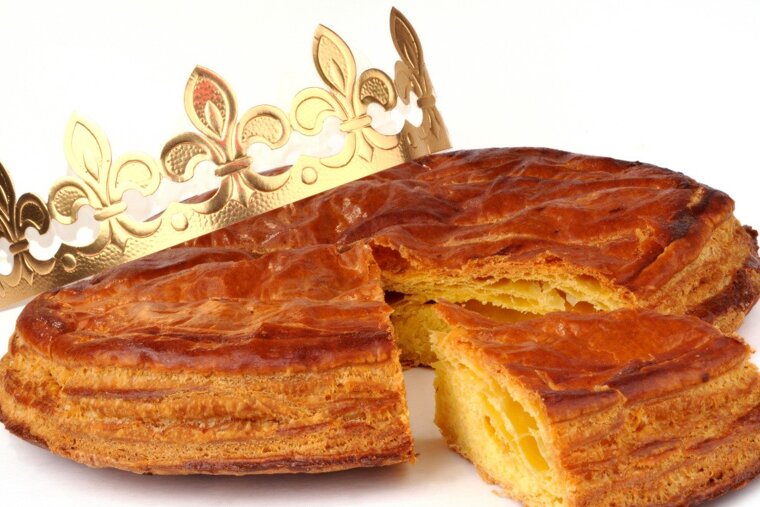
January - a time for cake and celebrations... If you pass your local Monaco bakery in early January you will no doubt find a selection of glazed pastry cakes with golden paper crowns sitting on top of them... or even a selection of small charms to purchase at the counter.
This wonderful tradition dates back to the fourteenth century and is likely in some ways to be related to the Roman tradition dedicated to the god Saturn and celebrating the longer days after the winter solstice.
Across France during the 'Epiphany', the celebration of the Magi (or Kings) visiting the new baby Jesus, which takes place on the 6th of January, cakes are eaten which are known as 'Gâteau des Rois' or Cake of Kings. Traditionally the cakes are made from a brioche and covered with candied fruit and sugar although this is not always the case. They do however all contain a bean or a charm of some kind and whoever eats the piece with the bean or charm will be crowned the next king! This is not always a privilege as it can mean that you have to buy the next cake!!
Whatever your thoughts and traditions, each region and family will no doubt have their own take on the celebrations. But with one thing in common, this is a time to celebrate with friends and family and eat some cake! I won't be complaining about that! I will be sampling as many as I can find in the hopes that I can receive a charm and my crown :-)
Ice Tropez - a cocktail Made in Saint Tropez

This sparkling wine cocktail is mainly based upon a rose wine mixed up with a flavour of peach and carbonated water. It was created by Gregoire Chaix, the owner of the trendy Bar du Port.
The modern and stylish bottle holds a unique and refreshing drink full of fruit flavours. The perfect cool drink to enjoy on a warm summer day or a long and lazy summer evening.
The cocktail was created in Saint Tropez, with wine and natural white peach aromas. Slightly sweet and sparkling, fresh and to be consumed with moderation as it's alcohol level is 6.5%.
In addition they also now produce a non-alcoholic fruit cocktail made from grape juice and natural aromas of white nectarines. A naturally fresh and fruity drink, deliciously bubbly, completely refreshing and fun, ideal for children.
Pissaladiere - Caramelised onion & anchovy flatbread popular across Provence & the Cote d'Azur
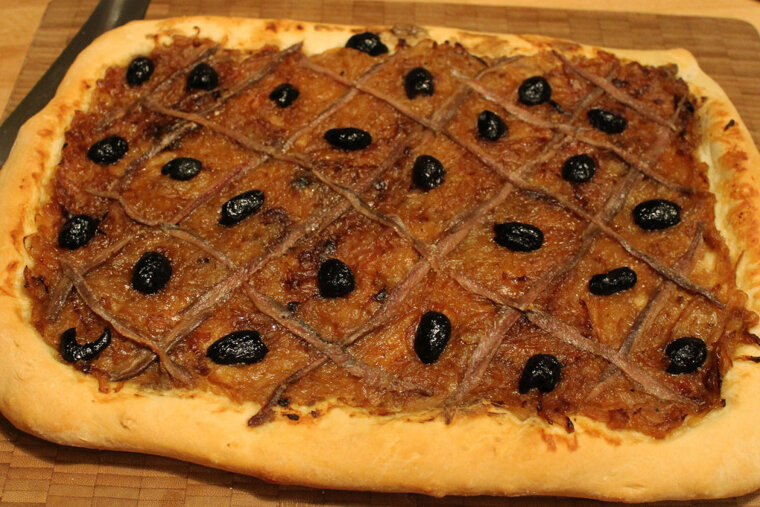
This is a classic a Provencal buffets and often served as an aperitif, it is also a great addition to any picnic situation.
It may in fact be the perfect food: sweet, salty, doughy and very portable! Sold in pretty much every bakery and market across Monaco you won't find it hard to pick up a slice. However you can also make it yourself. The French will make the dough themselves using fresh yeast sold in cubes at the boulangerie (bakery) but you can make it equally as tasty using a more simple dough recipe using active dry yeast.
Topped with caramelised onions, cooked in Provencal herbs, sugar, garlic and sea salt and then slowly reduced in the oven, the dough is cooked with the layer of onion and anchovies on top. Traditionally the anchovies are placed in a diamond shape pattern but you can decorate as you please! You may even see them with the addition of tomatoes or olives on top.
Ratatouille - Traditional vegetable stew from the Occitan region, a Provencal favourite

This Occitan vegetable dish originates in Nice. Aubergines, courgettes, peppers and onions are sautéed with herbes de Provence and garlic and the key ingredient, tomatoes, added later to make a rich and thick stew.
It is often served as a side dish but can be eaten as a main with bread, rice or pasta. It is perhaps Provence’s most famous culinary export, even lending its name to a Walt Disney film! Though referred to commonly as ratatouille niçoise, the dish is in fact popular along the entire Mediterranean coast as an easy summer dish.
Salade Niçoise - A delicious famous salad from the Côte d'Azur region of France
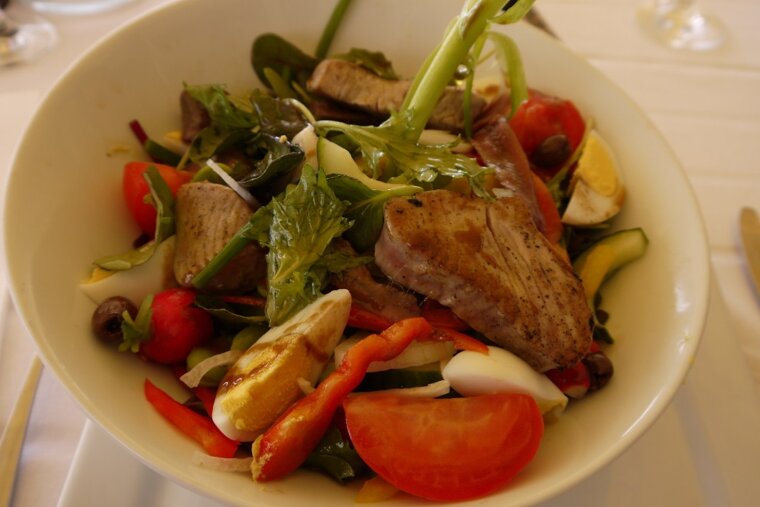
Of course, this popular salad comes from Nice, hence the Nicoise, and is not only a speciality of the region, but has become a popular salad the world over.
Salad leaves (although these can be optional in this hearty 'salad') are topped with tomatoes, quartered hard boiled eggs, boiled potatoes, canned tuna fish, locally grown Cailletier olives and finally anchovies. A classic vinaigrette is used to dress the salad.
As with most meals in Nice, a trip to the market in the morning is a must. Fresh produce is key to this fresh summer meal, not only filled with taste but colour as well. Traditionally Salade Nicoise should be made of only raw vegetables in order to fully enjoy the quality and freshness of the local produce.
Unfortunately this salad has become a victim of its success. This traditional Mediterranean salad now comes in many different forms and its 'true' ingredients are often debated. Some cooks simply serve raw vegetables on a bed of lettuce whilst others say that tomatoes are the base and potatoes are unsuitable!
All we can suggest is that you try it yourself in one of the wonderful restaurants throughout Nice.
Socca - Chickpea flour pancake, a delicious treat of a snack!

This speciality pancake / bread is made with chickpea flour and olive oil. The dough is rolled out into a large round flat shape and baked on a cast iron pan in the over. Eaten hot with lots of seasoning.
The peppery taste is truly lip-smackingly good! All along the French Riviera, the street vendors cook and sell socca in traditional paper cones, and it is best eaten fresh from one of these stalls or from the local market.
Crispy, crunchy, soft, peppery and possibly one of the best hang over cures you can find this chick pea based speciality will often be the source of long queues at the markets...but believe me, it it worth the wait!
Soupe au Pistou - Thick, rich Provencal vegetable & bean soup with basil dressing
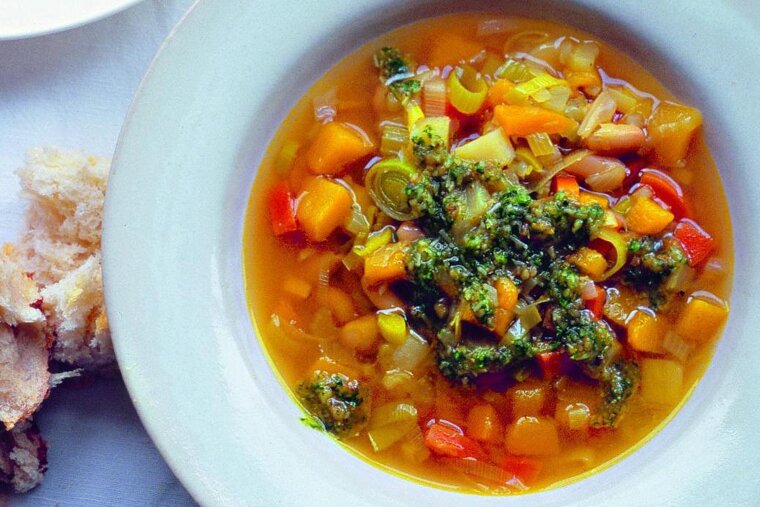
A tasty soup made with a selection of summer vegetable, fresh from the market and then garnished with a 'pistou' (not pesto!).
The pistou is what makes this a distinctly Provencal meal and locals will enforce the fact (strongly) that pistou is nothing like its cousin, pesto. The latter contains pine nuts, parmesan and pecorino, whereas pistou is a more basic mix of basil, good quality olive oil and garlic.
Basil looses a lot of its flavour when cooked, so the pistou is usually mixed into the soup just before serving or even served separately.
As with many French recipes, they are passed down through generations and so there are many variations and preferences for types of vegetables used, beans chosen or if pasta is added. But one thing that is not disputed is serving it with delicious bread and a serving of pistou.
Tarte Tropezienne - The one & only creamy sponge cake from Saint Tropez

The famous Tarte Tropezienne was created in 1955 by Alexandre Micka, an exiled Polish man living in Saint Tropez.
It can also be called a Pie Tropezienne and is made from sponge cake with a large amount of cream filling. It can be found in many bakeries in Saint Tropez.
The genuine Tarte Tropézienne is a mixture of two smooth creams and a gourmet brioche, decorated generously with coarse sugar. It owes its success to traditional manufacturing and to its original, closely guarded secret recipe. La Tarte Tropézienne is also a knowledgeable traditional pastry-maker that offers everyone irresistible gourmet pastries that are unheard of and always unique.
Tourte de Blettes - Swiss chard tart - the chard being the main ingredient!
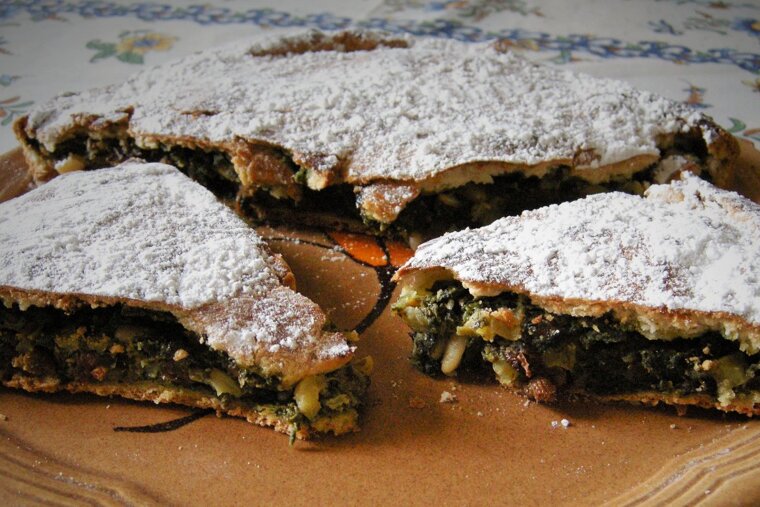
This sweet French tart originates in Nice and is made with Swiss chard (blettes)...not sounding entirely 'sweet' just yet is it?
So with the main ingredient being chard, an early morning trip to the market is in order if you wish to make this dish yourself. Be ware it can be tricky to get and you will probably need more than you think! The pastry is olive oil-based and forms the base and top crust. The filling is made with chard, pine nuts and parmesan and is seasoned with cinnamon. Still not sounding entirely like a sweet tart yet is it...?
But just think about sweet potato pie, pumpkin pie and carrot cake!
Sometimes you will find that the tart comes with a layer of apple on top, under the pie crust, and this can definitely make it more appetising for the uninitiated. Whatever your thoughts, it is worth a try and a true speciality of the Nice area.
More inspiration...
Surely there can only be one place to head for more inspiration after reading this page.... check out our local Restaurants suggestions!
